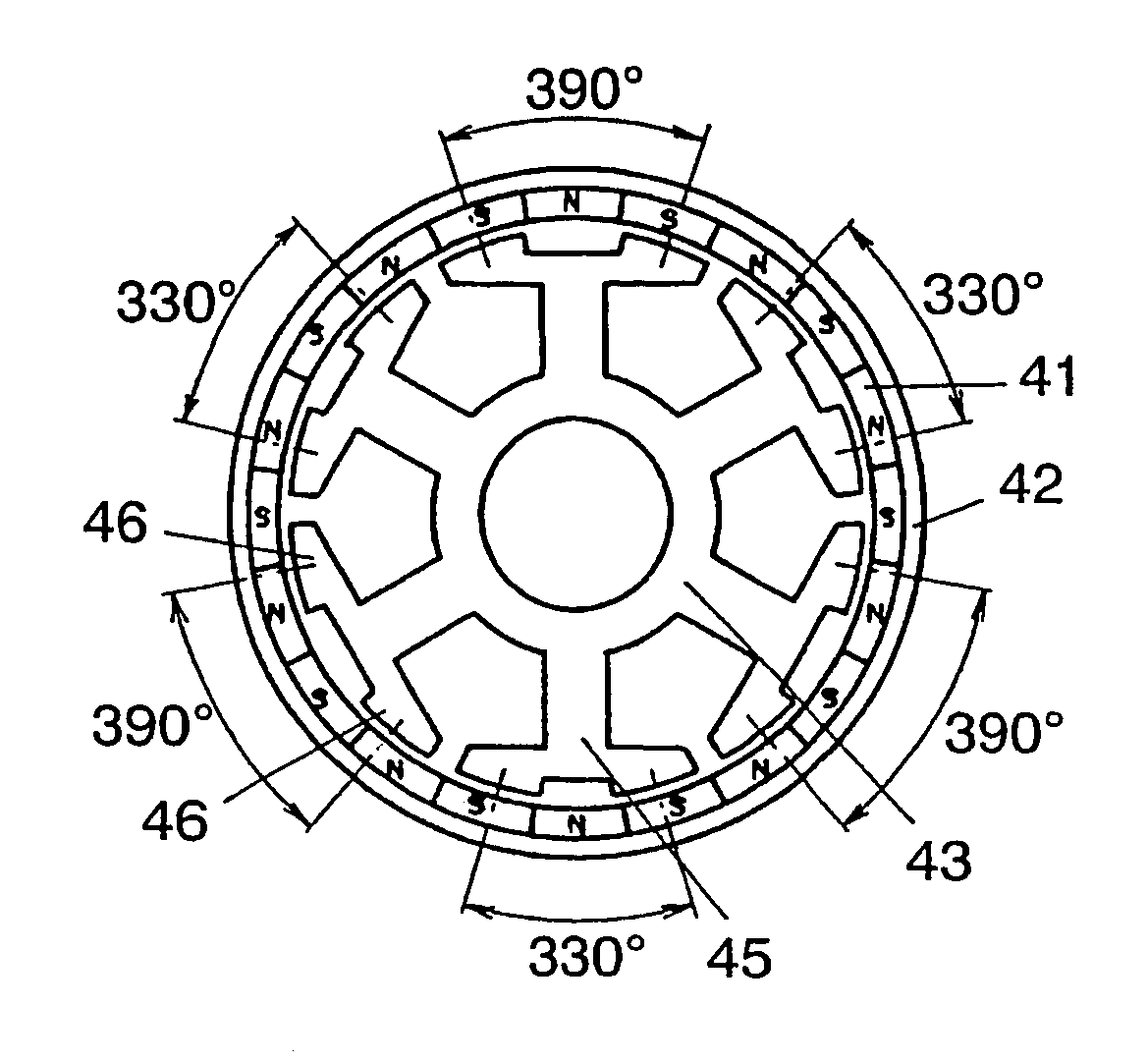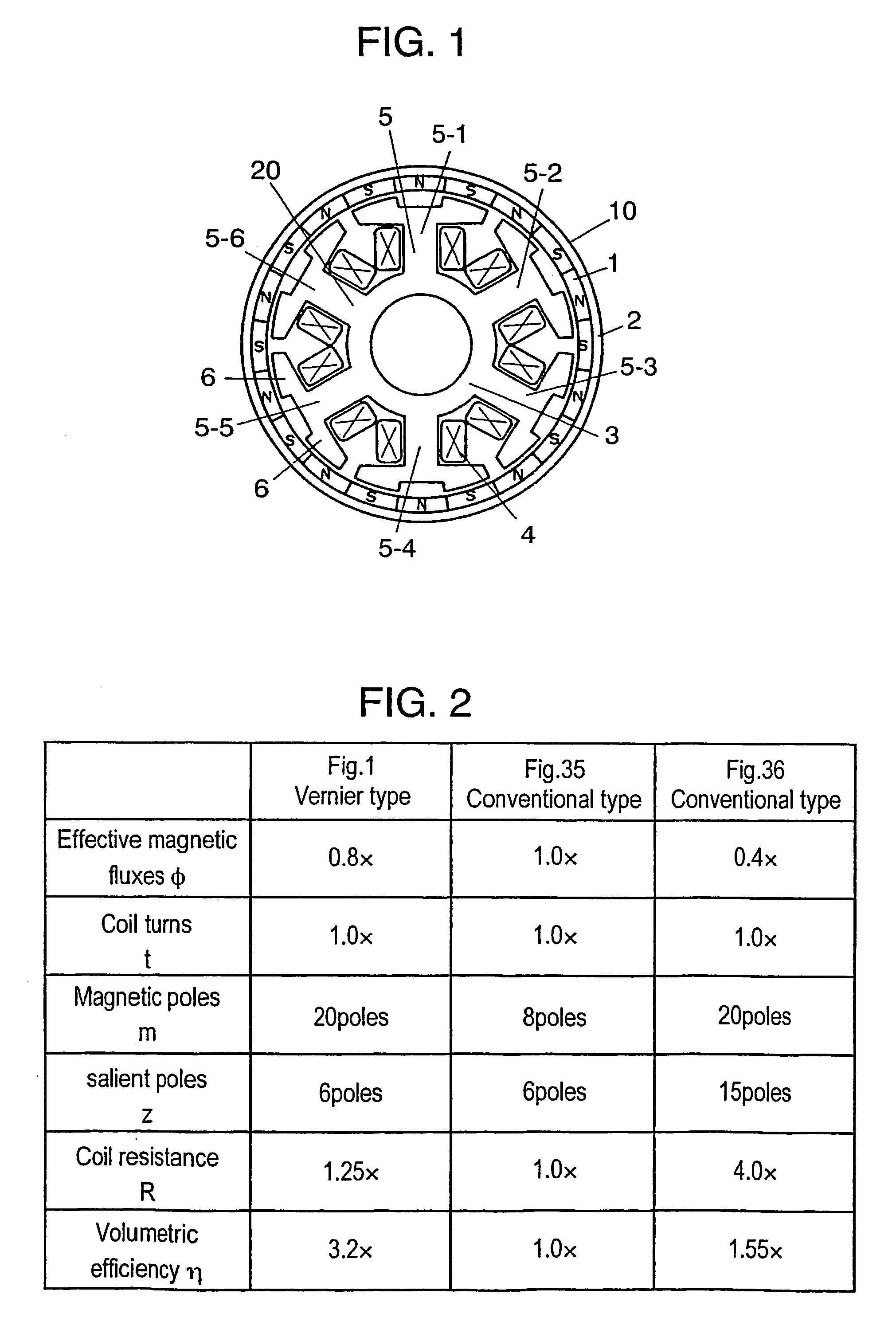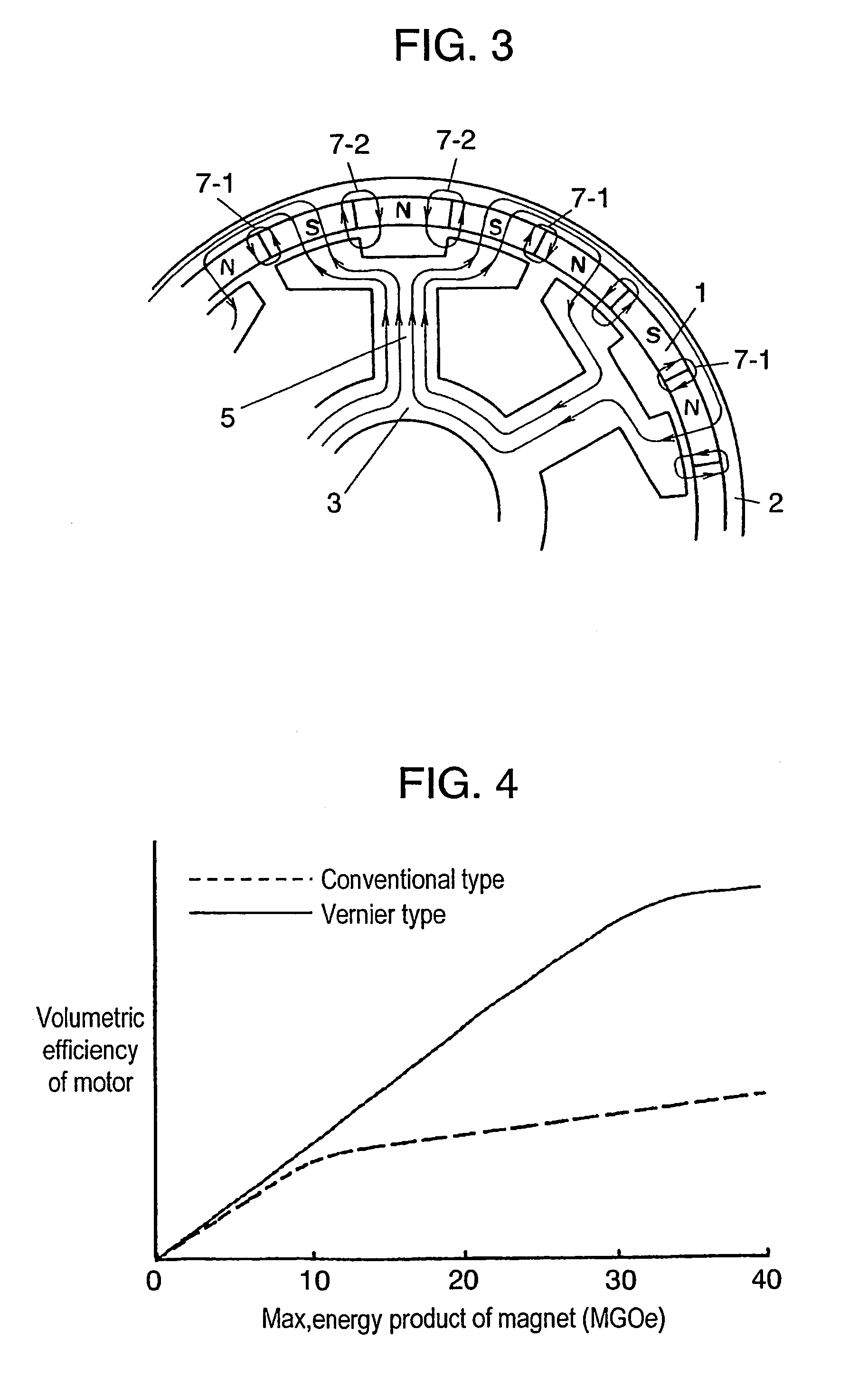Brush-less motor using vernier structure
a brushless motor and vernier technology, applied in the field of motors, can solve the problems of poor torque control, low efficiency of current-carrying motors in operation, and insufficient use of motors to achieve the effect of improving the volumetric efficiency of motors, increasing output, and reducing torqu
- Summary
- Abstract
- Description
- Claims
- Application Information
AI Technical Summary
Benefits of technology
Problems solved by technology
Method used
Image
Examples
exemplary embodiment 1
[0081]FIG. 1 is a schematic view illustrating a structure of a magnetic circuit of a brush-less motor in accordance with the first embodiment of the present invention. In FIG. 1, cylindrical magnet 1 is magnetized N and S poles alternately and uniformly at its inner wall to form 20 poles in total. Back yoke 2 is fixed to an outer wall of magnet 1. Core 3 is made of silicon steel plates that has been punched by press and laminated axially. Core 3 includes six salient poles 5 (poles 5-1 through 5-6) equi-spaced from each other. Coils 4 are wound on each salient pole 5. Each salient pole 5 is toothed and has two small teeth 6 at its edges facing magnet 1, so that 12 small teeth 6 in total are formed with a pitch which corresponds to two poles (N and S poles, i.e., 360 degrees in electrical angles) of magnet 1.
[0082]An innovative feature of this first embodiment is the two small teeth provided to an edge of each salient pole with a pitch corresponding to two poles of the magnet. These s...
exemplary embodiment 2
[0135]FIG. 11 shows magnetizing distribution of a magnet of a brush-less motor in accordance with the second exemplary embodiment of the present invention. Other magnetic circuit structures of the brush-less motor used in the second embodiment stay the same as those of the first embodiment shown in FIG. 1. In FIG. 11, magnet 21 is magnetized in predetermined skewed angle θ so that pole positions are different at an upper end and a lower end, where angle θ is a mechanical angle viewed from the rotation center and called a central angle.
[0136]In the case of a brush-less motor having a vernier-structure, “p”=a number of magnetic poles of the magnet, “z”=a number of salient poles of the core, then a waveform of cogging torque repeats “k” times per rotation, where “k” is the least common multiple of “p” and “z”.
[0137]Skew-magnetization of the magnet averages the waveforms of cogging toque in a laminated direction, so that an absolute value of the cogging torque becomes smaller.
[0138]FIG....
exemplary embodiment 3
[0146]In the second embodiment discussed above, a skew-angle is used in magnetizing. In this third embodiment, a shape of a core is devised so that cogging torque can be reduced. FIG. 13 illustrates a core shape of a brush-less motor in accordance with the third embodiment. The brush-less motor differs from that of the first embodiment in the following point: In FIG. 13, a shape of core 33 has different open angle α at small teeth 36 on an edge of salient pole 35 from that of the first embodiment shown in FIG. 1. The other structures stay the same as those in the first embodiment.
[0147]A change in open angle α at the small teeth greatly changes cogging torque. FIG. 14 show a waveform of cogging torque depending on a change in open angle α at the small teeth. FIG. 14A shows a waveform at open angle α=120 degrees in electrical angles, FIG. 14B shows at 150 degrees, and FIG. 14C shows at 180 degrees.
[0148]As shown in FIG. 14A, the cogging torque repeats the waveform six times during ro...
PUM
 Login to View More
Login to View More Abstract
Description
Claims
Application Information
 Login to View More
Login to View More - R&D
- Intellectual Property
- Life Sciences
- Materials
- Tech Scout
- Unparalleled Data Quality
- Higher Quality Content
- 60% Fewer Hallucinations
Browse by: Latest US Patents, China's latest patents, Technical Efficacy Thesaurus, Application Domain, Technology Topic, Popular Technical Reports.
© 2025 PatSnap. All rights reserved.Legal|Privacy policy|Modern Slavery Act Transparency Statement|Sitemap|About US| Contact US: help@patsnap.com



